Big Island Museums
Hawaiian Museums and Culture
Kailua-Kona
Hulihe’e Palace
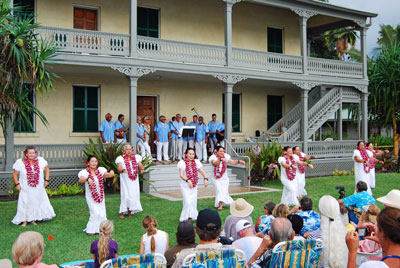
The Palace was a hub of Kailua-Kona when Governor John Adams Kuakini built it in 1838. Among the many things to see inside, there is a fascinating collection of local artifacts, which includes some from the reign of Kamehameha the Great, and some beautiful koa furniture. Outside on the lawn, near the royal fishpond, you may well see hula lessons taking place. The Palace has reopened after repairs made due to damage from both the 2006 earthquake and 2011 tsunami experienced in Kailua-Kona. There are free monthly concerts on the Palace grounds every third Sunday in the month.
When: Wed, Thurs, Fri, and Sat 10:00 AM to 3:00 PM
Where: Situated on Alii Drive in Kailua-Kona
Hulihe`e Palace
75-5718 Ali`i Drive
Kailua-Kona, Hawai`i 96740
Phone: (808) 329-1877 or visit Hulihe`e Palace
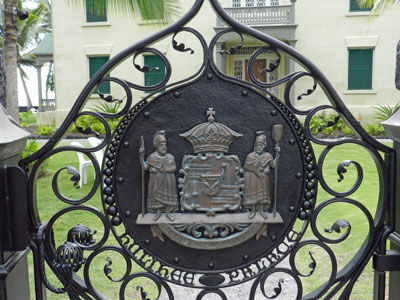
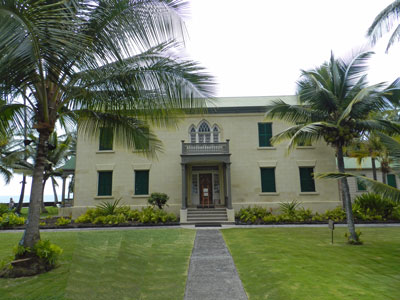
Ellison S. Onizuka Space Center
This is an educational facility dedicated to the memory of astronaut Ellison Onizuka, who was born and raised on the Big Island, and who tragically perished in the Challenger Space Shuttle disaster of 1986. It’s an interactive museum, where visitors can learn about the forces of gravity, manned space flight programs and more…there’s a moon rock, an astronaut suit, and models of spacecraft. 329-3441
When:daily 8:30 am–4:30 pm
Where: Located at Kona International Airport
Kona Historical Society and Kona Coffee Living History Farm
The historic Greenwell family store, a stone and coral mortar building built in 1875 as a general merchandising store, post office and meeting place, serves as the Museum. Ranching and coffee farming artifacts, photo exhibits, and a book and gift shop featuring locally made crafts. On Hwy. 11, one quarter mile south of Kealakekua. The coffee farm, also known as Uchida Coffee Farm, is a working farm in the midst of a coffee plantation, and was built by Japanese immigrants in 1925. Guides are dressed in clothes from the early 20th century, and they show visitors the original farmhouse, the Japanese (furo) bath house, the coffee processing mill and drying platforms, and talk of the immigrant farmworker experience. To reserve a spot on a tour, call 323-2006.
When: Saturday – 12.30 PM to 5.30 PM
Where: Captain Cook
For more info: Kona Historical Society’s websiteHilo & Hamakua Coast
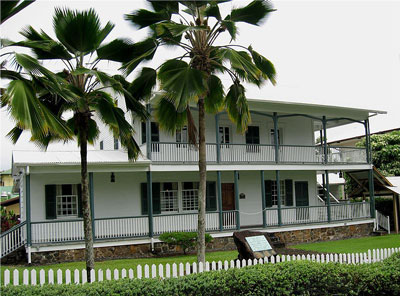
The Lyman House Memorial Museum, is a natural history museum founded in 1931 in the Lyman Mission House, originally built for New England missionaries David and Sarah Lyman in 1839. Nearly 100 eventful years later, in 1931, the Museum was established by their descendents. The Lyman Museum building, next door to the Mission House, was built In the late 1960s. It houses extensive displays on Hawaiian culture with a superb collection of artifacts, fine art, shells and minerals, and natural history exhibits as well as an archives, special exhibitions and a gift shop. The Museum has been an affiliate of the Smithsonian since 2002.
When: Monday-Saturday 10 am – 4:30 pm.
Where:

Pacific Tsunami Museum
Hawaii has had her share of experience with tsunamies, and in addtion to scientific information pertaining to these dramatic natural events, the main goal of the museum is to promote public tsunami awareness and education for the people of Hawai`i and the Pacific Region.
The most interesting artifacts in the museum are not the exhibits, but the volunteers who survived Hawaii’s most deadly tsunamies in 1946 and 1960. Visitors can listen to their stories of terror and view a range of exhibits. The museum is a memorial to those who lost their lives in Hawaiian tsunamis.
When: Monday-Saturday: 9:00 am – 4:15 pm
Where:
130 Kamehameha Ave.
Hilo, Hawaii 96720
tel: (808) 935-0926
935-0926 or www.tsunami.org
‘Imiloa Astronomy Center of Hawaii
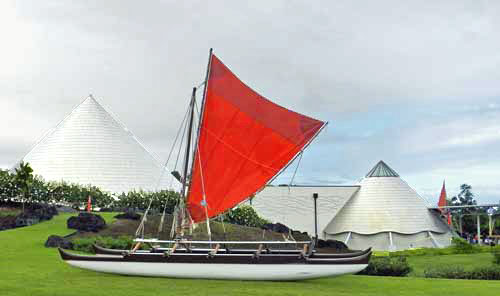
The ‘Imiloa Astronomy Center is a gathering place that advances the integration of science and indigenous culture. The diverse exhibits, programs and events harness leading technologies, environmental resources, and cultural practitioners. ‘Imiloa is located above the University of Hawaii-Hilo, with spectacular views of Hilo Bay. The planetarium and exhibits provide a unique experience for visitors, students, and families seeking to explore the connections between Hawaiian cultural traditions and the science of astronomy.

‘Imiloa Astronomy Center of Hawaii
600 ‘Imiloa Place
Hilo, Hawaii 96720
When: Tuesday – Sunday 9:00 am – 5:00 pm
Phone: 969-9700 or visit www.imiloahawaii.org
MapLaupahoehoe Train Museum

In the heyday of sugar plantations on the Big Island, the railway was the main way of transporting the crop, and the Hamakua portion of the railway was the most expensive section of railway in America at the time. The museum is housed in the old Laupahoehoe Railway Station, and has photos, memorabilia and tales of the times.


Open daily • 9 am to 4:30 pm on weekdays • 10 am to 2 pm on weekends
Located along Highway 19 near mile marker 25 on the Hamakua Coast in Laupahoehoe.
Phone: 962-6300 or visit WebsiteMauna KeaOnizuka Center for International Astronomy
Mauna Kea Visitor Center
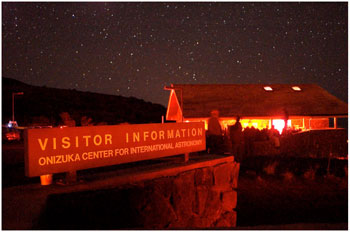
Credit: Mauna Kea Visitor Information Station
This is a great place to stop on your way up to the Mauna Kea summit to acclimatize for a 1/2 hour or so before heading up to the observatories on the peak (it cuts down on elevation sickness to do so). There are videos and displays about the observatories, astronomy, and the geography and ecology of the mountain. From 10 AM to 10 PM, telescopes are ready for public use at the station. During the day, a solar telescope is available for viewing, pointed at the sun and equipped with protective filters.
There are a public Escorted Summit Tour every Saturday and Sunday. Participants mustarrive at the V.I.S. by 1:00 PM on Saturday or Sunday and you must provide your own four wheel drive vehicle. The station does not provide any transportation to the summit.
After an orientation, visitors will caravan up to the summit. The drive to the summit takes about half an hour and the speed limit is 25 miles an hour. The tour will go into at least one of the Mauna Kea Observatories and will end between 4:15 and 4:30 pm on the summit. Those wishing to stay at the summit after that time may do so.
Open every day of the year from 9AM until 10PM at the 9,300 foot (2,800 meter) level
Phone: 961-2180 or www.ifa.hawaii.edu/info/vis/
